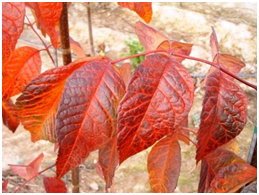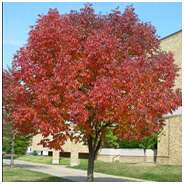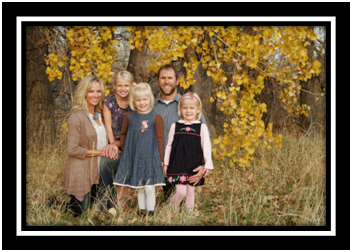From Us to You
 This is the second edition of our Colorado TreeScapes, Inc. newsletter. These are meant to be both informative and enjoyable. We want to share something that provides insight into the nuances of tree care to Colorado residents—whether tree enthusiasts, property manager, or just those with a keen eye for natural beauty. Possessing the knowledge base to offer trees a chance to grow and thrive is for the yard-loving layperson as well as the arborist. We’ve been doing this for about sixteen years now, and we know that often the best way we can serve is to simply be a resource. We hope you find our little newsletter to be functional, fun, and germane to all your tree-related interests.
This is the second edition of our Colorado TreeScapes, Inc. newsletter. These are meant to be both informative and enjoyable. We want to share something that provides insight into the nuances of tree care to Colorado residents—whether tree enthusiasts, property manager, or just those with a keen eye for natural beauty. Possessing the knowledge base to offer trees a chance to grow and thrive is for the yard-loving layperson as well as the arborist. We’ve been doing this for about sixteen years now, and we know that often the best way we can serve is to simply be a resource. We hope you find our little newsletter to be functional, fun, and germane to all your tree-related interests.
Thank you,
The Colorado TreeScapes Team
Plant Health Care
Winter will be here before you know it. Even though we still see warm temps, in only a month or so we’ll have freezing nights and the first snow. With dormant season fast approaching, we want to highlight some excellent fall and winter plant health care options for your trees. Right now we are ramping up and preparing for our deep root fertilization treatments as well macro injections for iron deficient trees. And that’s just the beginning of what we can do for your trees this time of year.
Now is the time to be thinking of how to fortify and protect your trees’ health before the next growing season. We offer a systemic pest control drench, applied when the tree is dormant and providing season-long protection the following year from many damaging insects. Combined with our spring and summer sprays, this makes for a comprehensive preventative pest management program.
Winter is also a great time to get some water down to the deep roots. Even though the canopy is dormant, the roots are actively preparing for spring. Trees’ need for moisture is often forgotten in the winter, as it is assumed that snow takes care of everything. That is often not the case. On average it takes 10″ to 20″ of snowfall to equal 1″ of precipitation. Even our snowiest winters can be pretty dry. That’s why we have several deep root treatment programs that offer multiple winter waterings.
Featured Tree: Autumn Purple Ash
Scientific Name: (Fraxinus americana)
Mature Height: 40′ to 60′
Mature Width: 30′ to 50′
Shape: young trees are often pyramidal in shape, gradually rounding out as they mature
Growth Rate: moderate to fast
Drought Tolerance: moderate
Summer Color: deep green
Fall Color: reddish purple, often with golden undertones on the interior of the canopy
 With Fall just around the corner, we are going to use this edition to feature perhaps the prettiest tree in Colorado when October rolls around. The Autumn Purple Ash is best known for its brilliant deep red to purple canopy that stands out all along the Front Range about this time of year. This is a non-native species that is actually a variety of the White Ash. The Autumn Purple Ash is fairly hardy and can be found throughout the majority of the U.S. This tree is best suited to landscapes with lots of space with full sun. Planting it in areas with limited soil availability can make this tree more susceptible to disease. There are several pests that routinely attack it, with Ash Borers being the most destructive. A regular pest control program can minimize risks along with fertilization and regular watering.
With Fall just around the corner, we are going to use this edition to feature perhaps the prettiest tree in Colorado when October rolls around. The Autumn Purple Ash is best known for its brilliant deep red to purple canopy that stands out all along the Front Range about this time of year. This is a non-native species that is actually a variety of the White Ash. The Autumn Purple Ash is fairly hardy and can be found throughout the majority of the U.S. This tree is best suited to landscapes with lots of space with full sun. Planting it in areas with limited soil availability can make this tree more susceptible to disease. There are several pests that routinely attack it, with Ash Borers being the most destructive. A regular pest control program can minimize risks along with fertilization and regular watering.
Dormant Pruning
As leaves begin to drop and the temperature follows suit, we can tend to forget about our yards and trees. What most people do not know is that this can be the best time to trim their trees.
There are many overlooked benefits to trimming trees during the winter. With the leaves out of the way, it’s easier to get a good look at the structure or skeleton of the tree. This can make it easier when determining which limbs should stay or go to enhance the structural integrity of the tree. Having a tree with proper limb spacing and a single dominant stem can help prevent storm damage and add years to the life of a tree.
Along with helping correct and maintain the proper structure, pruning in the winter can also reduce the risk of disease and decay. Trees trimmed in winter heal quicker with less risk of exposure to disease-causing bacteria and insects. There are many diseases such as different forms of Wilts to Cytospora Canker that can be mitigated by waiting to prune until growing season is over. Fireblight is a common disease that can easily be spread by pruning at the wrong time of year. It aggressively attacks many species, with Apples, Crabapples and Pears being the most commonly targeted. It causes cankers or wounds as well as severe die-back on limbs that can make them look burnt (hence its name). This disease spreads most easily in spring and summer when temperatures are warmer. By pruning as recommended in winter, the risk of transferring the bacteria from one cut to another is greatly reduced. Insects are also overwintering so they are not going to be attracted to fresh cuts or increased production of sap and begin infesting the tree.
Additionally, since the ground is harder in the winter, cosmetic damage to the lawn is lessened when large limbs are removed and fall to the ground. Flowerbeds and gardens are done growing for the year so there is no concern that flowers or vegetables will be torn up when cleaning around trees. Finally, one of the most important benefits: you’ll know that when spring finally rolls around again and you begin your grilling and other outdoor activities, your trees will be looking their best!
One of Us: Griff Gehring

Griff is the Owner & President of Colorado TreeScapes, Inc. and has been working in the tree industry since 1995. He entered the field by happenstance when an early fall snow knocked down an arsenal of limbs and branches. He was only a high school senior, but his phone started ringing wildly from lawn clients who needed tree care as a result of the storm.
After graduating from Cherry Creek High School in 1996, he headed up to Ft. Collins to further his education. While he was there, he started a lawn and tree service under the tutelage of Tim Buchanon (City Forester, International Society of Arboriculture President and friend). After gaining invaluable knowledge and experience, he returned back home to Centennial to sell the lawn service (American Mowing, LLC) and launch Colorado TreeScapes so that he could focus specifically on trees. He earned an Arborist Certification through Tree Care Industry Association and his General applicators license—Certified Supervisor and Forestry Category—through the Colorado Department of Agriculture.
It’s been over sixteen years now and the business has been a great success. The tree care industry lends itself well to Griff’s desire for a challenge. There are several variables that must be properly managed in order to operate a tree care business. Executing precise pruning and removals at 50′ and greater while dangling from a 1/2” line is just one part of a tree care business. Griff also ensures the company has all the proper certifications, city licensing, insurance certifications, knowledge, skill and staff to carry out the various tree care services. Griff is proud to employ the highest quality employees in the business, most of whom are college graduates or in the midst of earning their degrees.
Griff is thankful for the many loyal customers with whom God has blessed him over the years. He’s been married to his wife, Allyson, for twelve years, and together they have three precious daughters.
Contest: Where’s This Tree?

Species: Ponderosa pine
Sprouted/Age: 1912-1932/ 80-100 years old
Diameter at 4.5′ high 31” (half dead leader) 30” (100′ live leader)
Pounds of Carbon Dioxide tree has absorbed: 8000lbs (Approximately)
Weight of Tree: Approximately 37,500 lbs. (excluding the root system)
Think you know where this tree is? Send us an email to cotreescapesinfo@gmail.com , noting the main street intersection. We’ll send the first three people to answer correctly a $10.00 Starbucks gift card.

